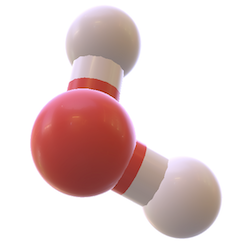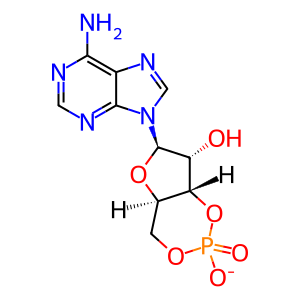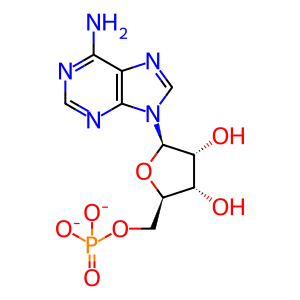Reaction: PDE4A hydrolyses cAMP to AMP
- in pathway: G alpha (s) signalling events
Cyclic nucleotide phosphodiesterases (PDEs) are a large family of enzymes that regulate signal transduction via mediating the degradation of the second messenger molecules cAMP and cGMP (Maurice 2005). The cAMP-specific PDE4A is highly expressed in cardiovascular tissues, smooth muscles, brain, keratinocytes and immune system cells, including T cells, monocytes, macrophages, neutrophils, dendritic cells and eosinophils. PDE4A inhibitors can effectively raise the intracellular level of cAMP, and help to modulate inflammatory and immune system responses (Maurice et al. 2014). PDE4A inhibition represents an effective therapeutic strategy in many inflammatory conditions, including asthma, chronic obstructive pulmonary disease (COPD), idiopathic pulmonary fibrosis, psoriasis, atopic dermatitis (AD), inflammatory bowel disease (IBD), rheumatic arthritis (RA), lupus and inflammation of the nervous system.
Reaction - small molecule participants:
AMP [cytosol]
H2O [cytosol]
cAMP [cytosol]
Reactome.org reaction link: R-HSA-9708261
======
Reaction input - small molecules:
water
3',5'-cyclic AMP(1-)
Reaction output - small molecules:
adenosine 5'-monophosphate(2-)
Reactome.org link: R-HSA-9708261



